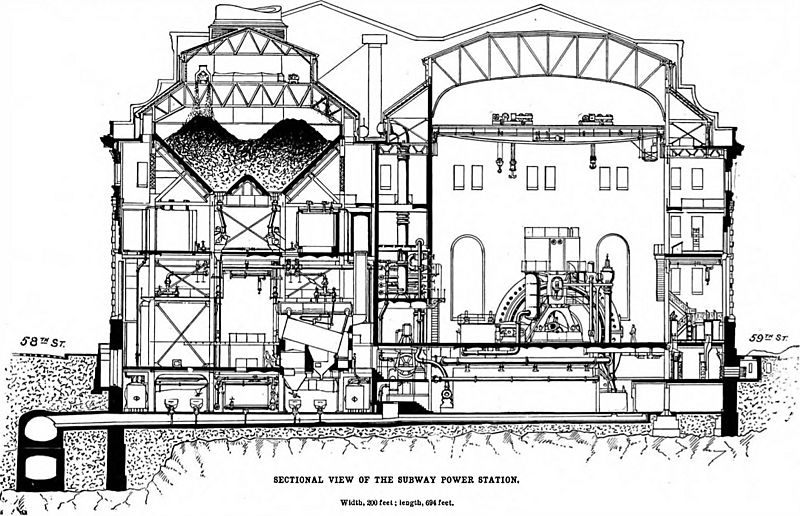Image: Scientific American Volume 91 Number 18 (October 1904) (1904) (14755519722)

Description: Identifier: scientific-american-1904-10-29 (find matches) Title: Scientific American Volume 91 Number 18 (October 1904) Year: 1904 (1900s) Authors: Subjects: portland scientific cement steam electric eskimo american automobile scientific american feet steam pressure small monthly portland cement water power rapid transit telephone exchange alpha centauri power house improved lime Publisher: View Book Page: Book Viewer About This Book: Catalog Entry View All Images: All Images From Book Click here to view book online to see this illustration in context in a browseable online version of this book. Text Appearing Before Image: d that can compare in size, capacity, and speedwith this. The total length of the line is 24.7 miles,of which 19 miles is underground and 5.7 miles iscarried on an elevated structure. It includes 6.7miles of four-track, 7.4 miles of three-track, and 10.6miles of two-track road. If we include 5 miles »tswitches and sidings, there is a total track mileageof 70 miles. The contract was let four years ago for$35,000,000, this being the amount necessary for theconstruction of the road. The equipment, power sta-tion, etc., cost $12,000,000 more, making the total cost$47,000,000. There, are two classes of service, express and local;the former using the two inside tracks, and the latterthe two outside tracks of the four-track road. Ex-press trains, which will run at a speed of about 25miles an hour including stops, are made up of eightcars, of which five are motor cars. The local trains,which will have a speed of about 16 miles an hour, in-cluding stops, are made up of six cars, four of which Text Appearing After Image: SECTIONAL VIEW OF THE SUBWAY POWER STATION. Width, aw feet; length, 694 feet. 298 Scientific American Oet@ber 29, 1904. are motar cars. The motor cars carry two 200-horse- power motors each, or 400 to the car, or 2,000 for theexpress trains. On tangents the expresses will attaina maximum speed of about 50 miles an hour. Specialprecaution has been taken to safeguard the passengers.The wooden cars have steel underbodies, and thesewill gradually be replaced by all-steel cars, built witha view to rendering them both fireproof and collisionproof, the cars being of a modified vestibuled type, withspecial construction at the ends to prevent telescoping.A block signal system, which includes the latest re-finements in the way of automatic stops at the signals,absolutely preventing a train running into a blockwhen the signals are against it, has been installed,and it is likely that the enviable record of the ele-vated roads in respect of the small number of acci-dents, will be surpassed on the Note About Images Please note that these images are extracted from scanned page images that may have been digitally enhanced for readability - coloration and appearance of these illustrations may not perfectly resemble the original work.
Title: Scientific American Volume 91 Number 18 (October 1904) (1904) (14755519722)
Credit: https://www.flickr.com/photos/internetarchivebookimages/14755519722/ Source book page: https://archive.org/stream/scientific-american-1904-10-29/scientific-american-v91-n18-1904-10-29#page/n4/mode/1up
Author: Internet Archive Book Images
Permission: At the time of upload, the image license was automatically confirmed using the Flickr API. For more information see Flickr API detail.
Usage Terms: No known copyright restrictions
License: No restrictions
License Link: https://www.flickr.com/commons/usage/
Attribution Required?: No
Image usage
The following page links to this image:

